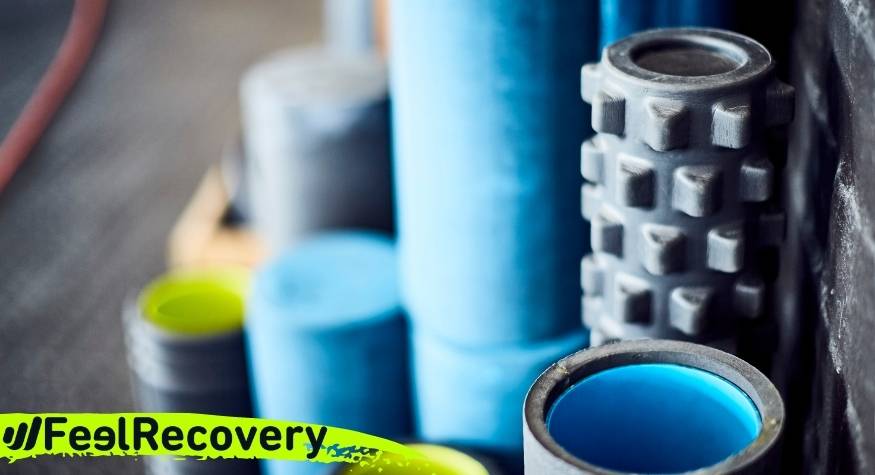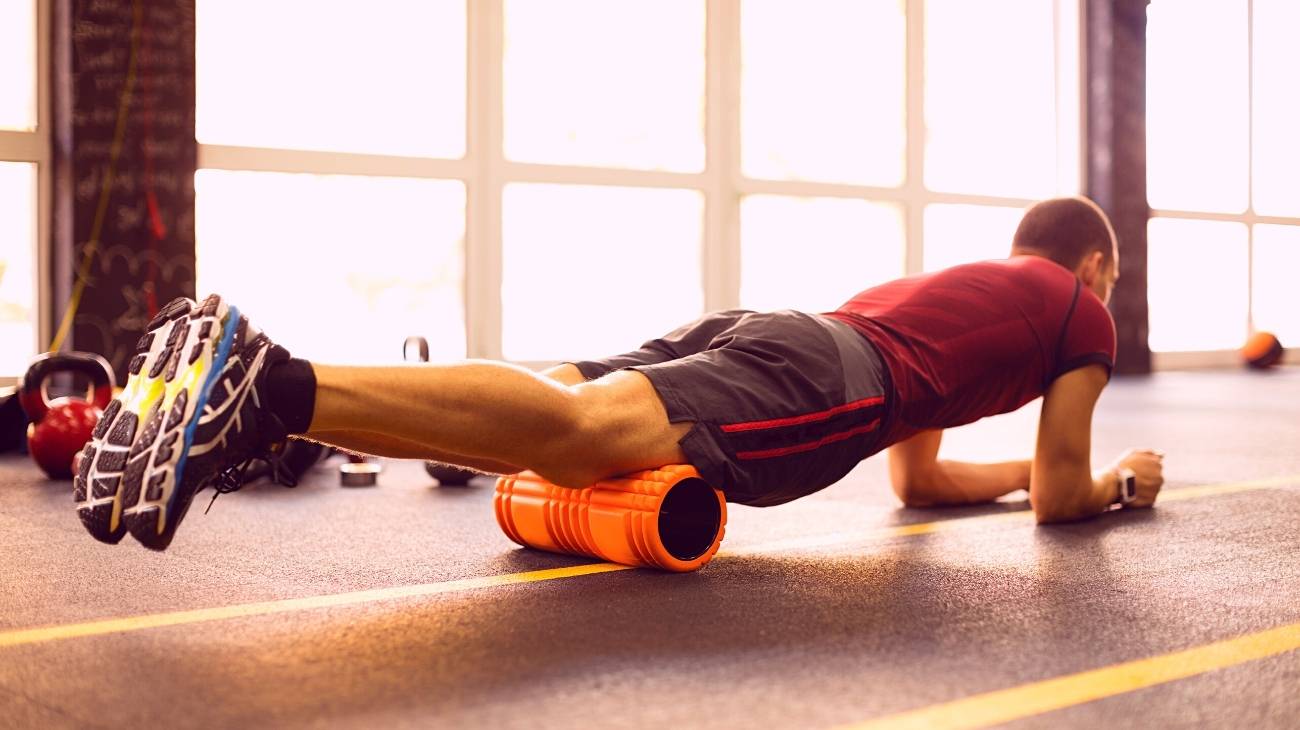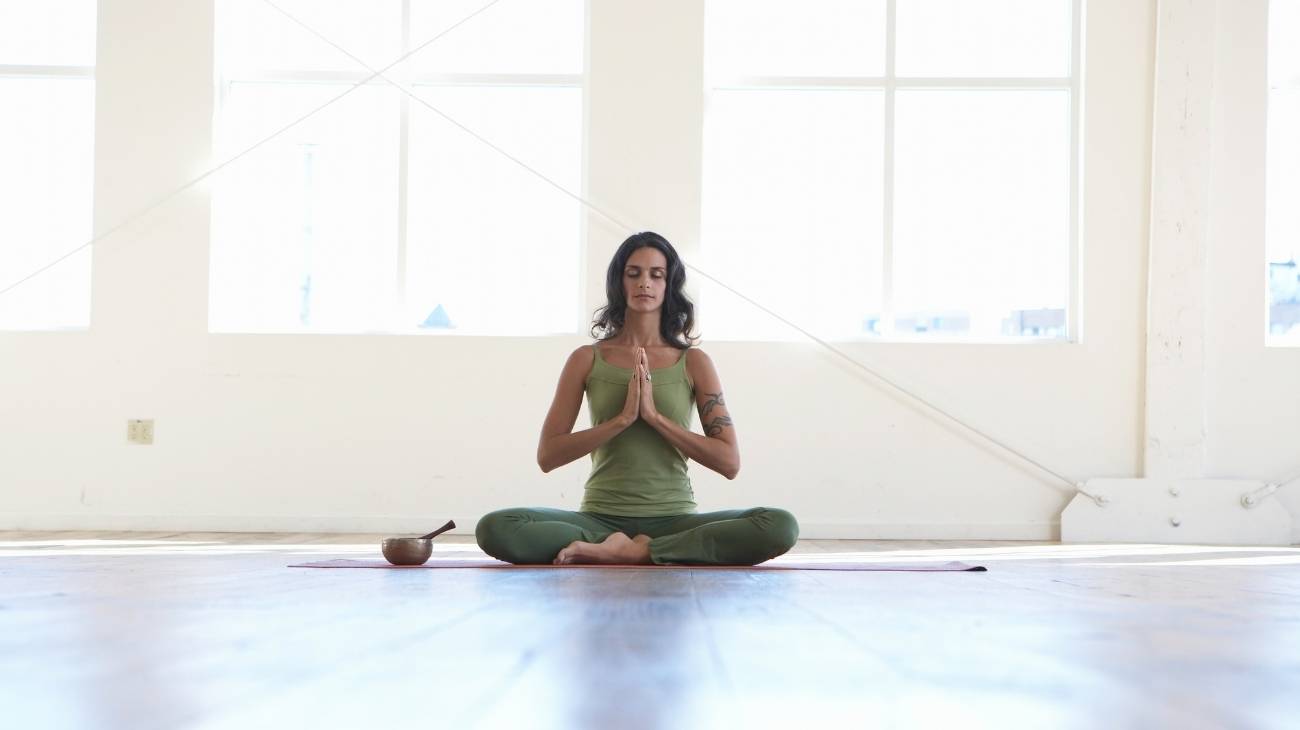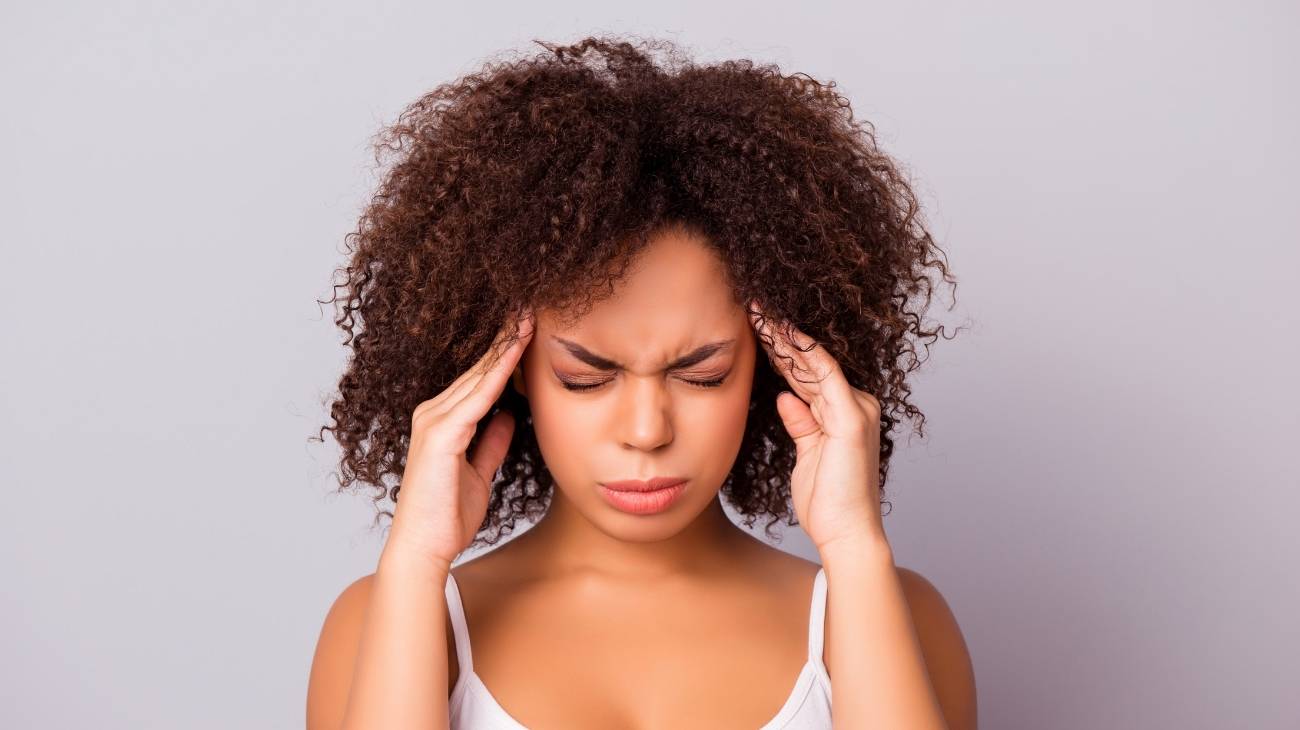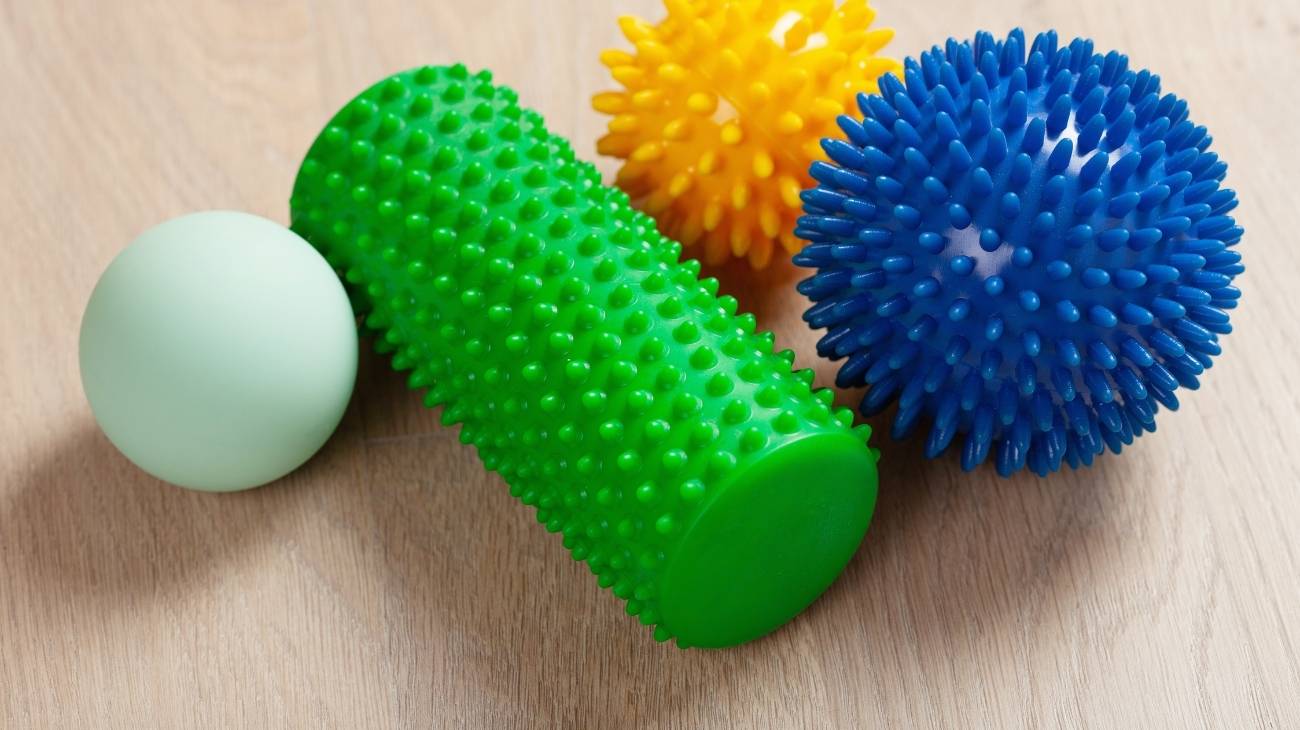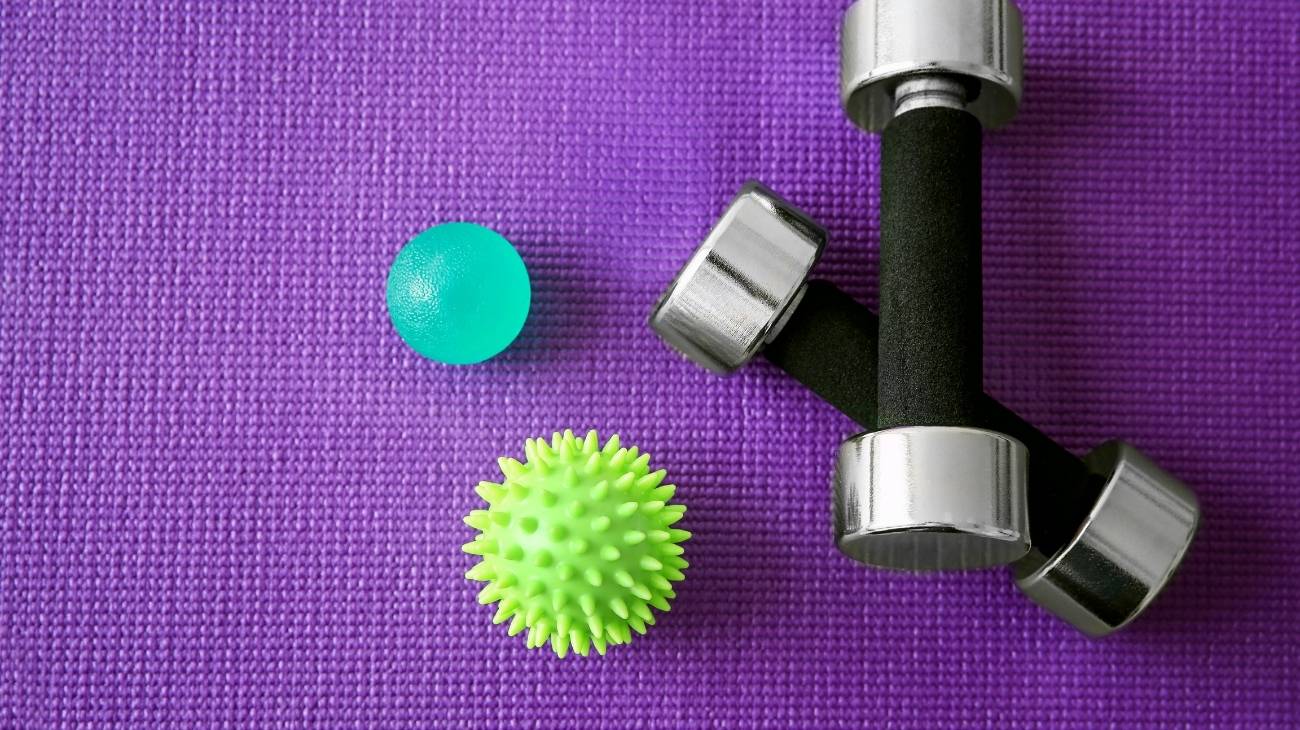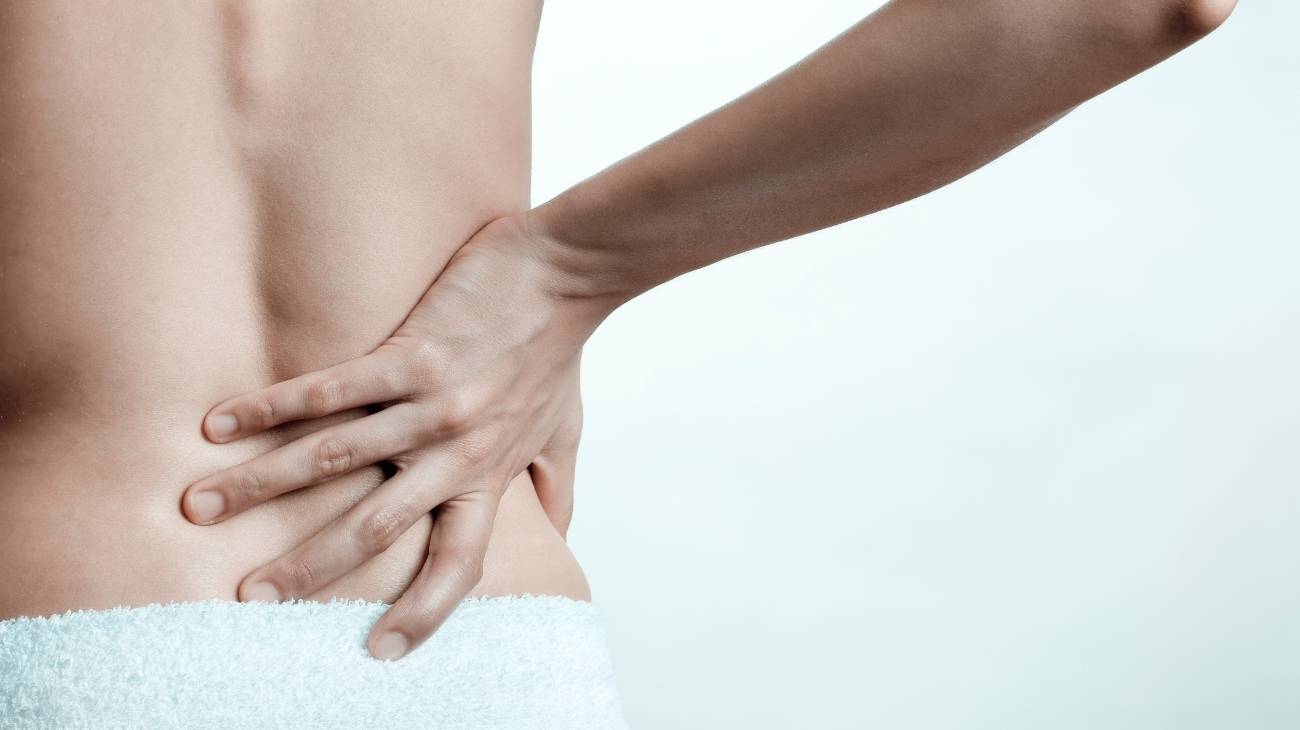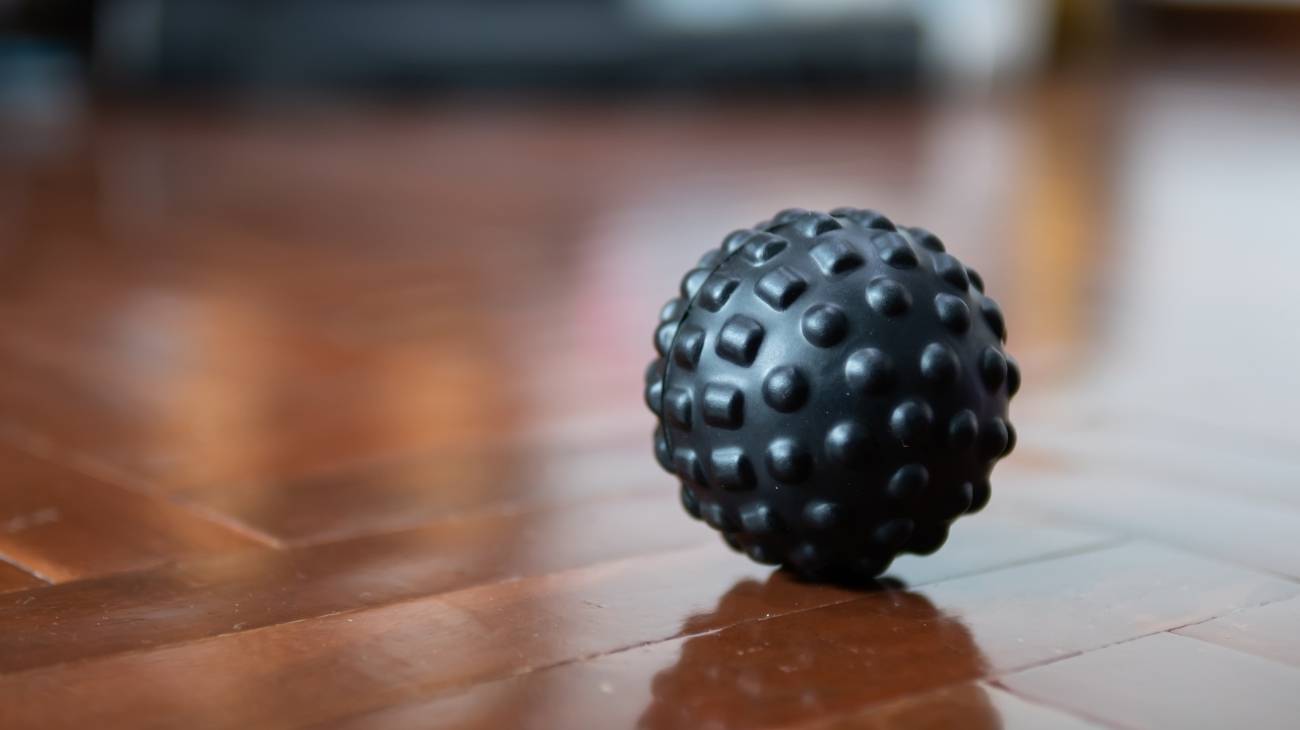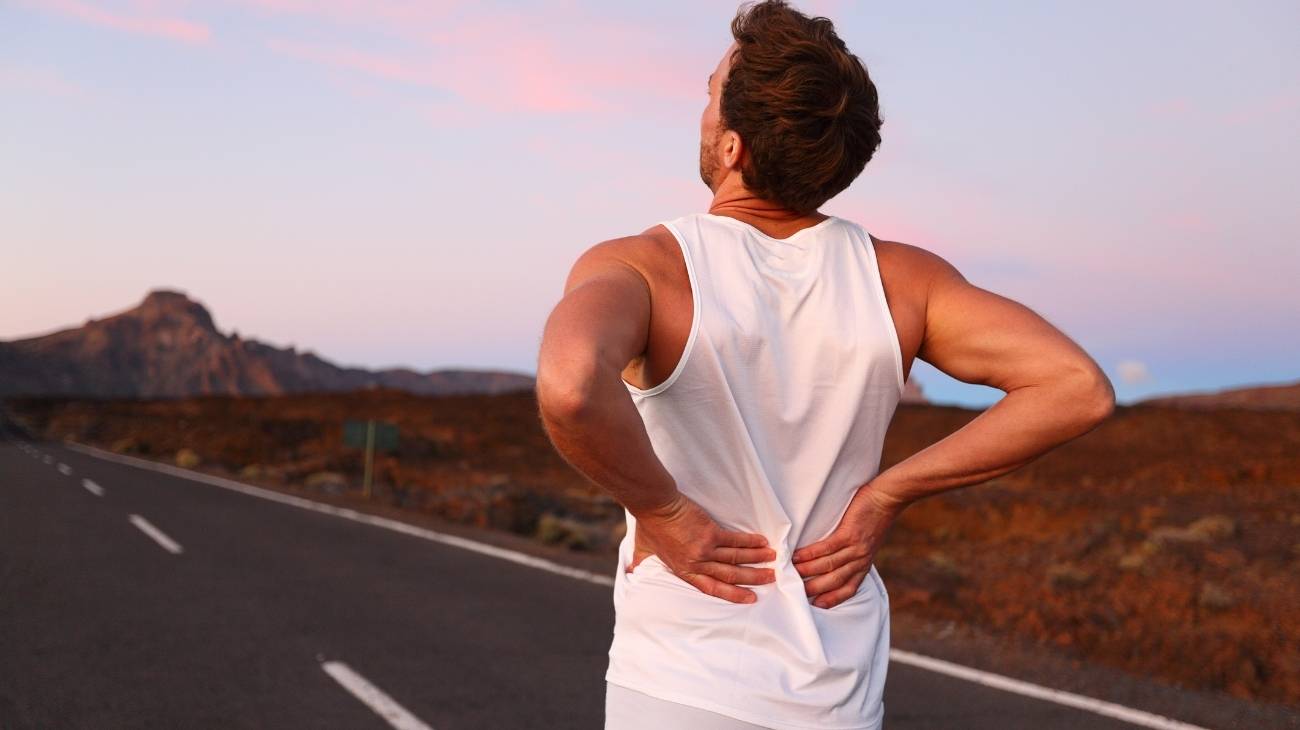- What kind of aches and pains can be relieved by daily use of the Foam Roller?
- Types of Foam Roller: Which ones exist and what kind of pain can each one be used for?
- Foam Roller Exercises for leg pain relief
- Foam Roller exercises for no more back pain
- Foam Roller training routine for myofascial pain in the calves
- Foam Roller workout to relieve pain in shoulders, arms and forearms
- Other products ideal for relieving muscle and myofascial tissue aches and pains
Every muscle group requires time to repair damaged tissues and develop greater strength and mass. When this recovery time is not respected, the body becomes fatigued and wears out more easily leading to mild, moderate and chronic injuries.
The function of the Foam Roller is to facilitate recovery by relaxing the musculature and releasing myofascial tension, both of which are important if you want to allow the body to overcome the fatigue of training. Learn everything you need to know about using the Roller Massager.
What kind of aches and pains can be relieved by daily use of the Foam Roller?
- Low back pain: the stimulating roller is great for relieving tension and generalised pain in the back. Often, low back pain is a chronic pain condition, in these cases it is best to have the guidance of a physiotherapist to assess when it is appropriate to use this type of massaging product.
- Back pain: special care should be taken to stimulate the back of the spine, remember that the bones should not be directly stimulated by the massage roller. Start with a soft roller and with little pressure if you have not had previous experience with this type of massaging device.
- Neck pain: as long as the pain is due to stress, contractures and minor muscle injuries, you can safely use the roller. For this part of the body, use a soft, smooth roller, remembering that the movements should be subtle at first to avoid injury associated with the massage routine.
- Tendonitis: as the roller performs deep massages, it will be very useful to use a roller with grooves and protuberances, as they simulate the shape of the fingers and will allow you to receive a professional massage on the tendon structure, mainly in the legs.
- Muscle soreness: Tensions, contractures, cramps and even fatigue will leave your muscles sore after intense activity such as walking, jogging and running. The roller is excellent for preparing the body for the change in your daily routine and can be used to prevent soreness as a preventative measure.
- Pain due to poor circulation: when pain and swelling are mild, you can use the massage roller daily to increase blood circulation, regulate body temperature and prevent fluid retention in the lower limbs as a result of vascular problems.
Bestseller
-
High Density Foam Roller for Muscle (Black/Gray)
$29.95 -
High Density Foam Roller for Muscle (Green/Navy)
$29.95 -
High Density Foam Roller for Muscle (Pink/Bordeaux)
$29.95 -
Pack 2 In 1 Foam Roller High + Soft Density (Black/Gray)
$29.95 -
Pack 2 In 1 Foam Roller High + Soft Density (Green/Navy)
$29.95 -
Pack 2 In 1 Foam Roller High + Soft Density (Pink/Bordeaux)
$29.95 -
Soft Density Foam Roller for Recovery (Black)
$29.95 -
Soft Density Foam Roller for Recovery (Green)
$29.95 -
Soft Density Foam Roller for Recovery (Pink)
$29.95
Types of Foam Roller: Which ones exist and what kind of pain can each one be used for?
By material density
- Normal: when it comes to massage rollers, there are a large number of products available on the market. Hardness or density are key when choosing a product. The normal or "standard" ones are ideal if you do not want to have several rollers at home, with this model you will be able to do all the routines with respectable results.
- Soft: they are the best to start receiving stimulation if you have no experience with the use of the Foam Roller. In addition, you can use them if you have high skin sensitivity such as people with sensory disorders. The stimulation will be more superficial, but it works if you want to relax the muscles.
- Hard: these are the best option for athletes, who already know their body and know how to address myofascial tensions and areas where there are irregular groupings in the muscle fibres. Most come with grooves, bulges and button-like features to reach deeper into the body.
By size
- Short: these are the most suitable for working the legs, arms and neck, as you will be able to better manipulate this product to offer a safe massage. They are more practical and transportable, so it's a smart buy if you are constantly on the move.
- Long: these models work perfectly to stimulate the torso, whether it is the back, chest or sides of the body. They are sturdier and longer because they need to cover a larger body area and remain stable. Long rollers are also usually for beginners and you will find them with smooth surfaces.
- Large diameter: these are the most common to use, whether you get them long or short in size. Larger diameters stimulate the back better, but remember that they should be sturdy and should not bend under weight.
- Small diameter: these designs, which are half the diameter of the normal roller, serve to bring the body closer to the ground and give people a feeling of greater stability. They are usually requested for domestic use and you can find them with any type of texture.
By material of manufacture
- Projected polyurethane: this is a material that becomes flexible with time and use, you must be sure to buy a one-piece roller if it is made of this material, because the two-piece ones do not have the durability and resistance you are looking for.
- Polypropylene (EPP): although its cost is higher, it is the material used to manufacture professional rollers, more resistant and with textures, aimed at sportsmen and physiotherapists who will make intensive use of this type of product. This material has been used for a few years and is more durable than others.
- EVA rubber: standard rollers are also usually made of acetate vinyl, they support intermediate loads. So, if you are a person with a lot of stress and require general relaxation, this massaging product is the best choice. When you touch it, it feels like softness, as if you were touching foam.
By shape
- Smooth: these are the designs that began to make the benefits of the Foam Roller known in the world, they allow people to be initiated to this type of myofascial stimulation. In general, they are longer, softer and more flexible, so there will be no possible damage due to initial misuse.
- With textures: the most modern and professional rollers come with grooves, protuberances and buttons that simulate fingers and palms. They generate a deeper massage and tend to cause some discomfort depending on the pressure the person puts on them.
- Cylindrical: these are transportable products, designed for people who need to go constantly from one place to another, but need to have the Foam Roller close by. The functions are the same as the standard rollers, facilitating myofascial release and muscle relaxation.
- Flat based: used to address core balance, when people need to work more focused on posture. It is as if you cut a roller in half, there will be a flat base that prevents the roller from moving, their use is best applied in yoga and pilates.
By technology
- Electric: they are powered by electricity because they offer vibrations with different intensities. They are aimed at a more domestic use, where people only need to place the product on the damaged musculature to start relieving myofascial tension.
- Manual: these are the classic rollers that we all know, in which body pressure is required and the limbs are used to make the sliding movements that the body requires in the presence of pain and discomfort.
Foam Roller Exercises for leg pain relief
What is it for?
Remember that there can be no direct stimulation on the knee, but by working the muscle groups connected to it you can ensure better joint function. The quadriceps help to keep the leg straight and allow people to move, the hamstrings support knee flexion and contribute to traction when walking. Both are muscles that you can work with deep massage and keep them active.
How is it done?
- A sturdy roller with bumps is recommended.
- Work the quadriceps first.
- Lie on your stomach and place the roller on one quadriceps at a time.
- With your hands you can stabilise the glides.
- Start with little pressure, the movement is forwards and backwards.
- A gentle massage can last three minutes and with intensity extends to 40 seconds.
- Allow a break and work the hamstrings.
- Place the roller under the thigh.
- With your hands and free leg you stabilise and do the movements.
- You can also do three minutes with gentle strokes.
When to do it?
The best time to use the roller will depend on the purpose to be achieved. If you are going to make a change in training, then prepare the legs with the roller, so that the musculature is ready to withstand the new demands. If you want to relieve aches and pains, then the massages should be deeper into the leg, which are tough and gentle strokes are not enough if you have knots in your muscles.
Foam Roller exercises for no more back pain
What is it for?
The back is divided into four main groups, so you can't stimulate them all at the same time with the massage roller. It is important to focus your work on at least three sections: dorsal, upper back and lower back. Remember that the ailments to be addressed should be mild, with pain that you can tolerate. Although there are chronic conditions that you can address if the pain is constant and bearable.
How is it done?
- Once you have chosen the area to work on, place the Foam Roller between your body and the floor.
- Use your forearms to regulate the body pressure.
- Make gentle gliding strokes for three to four minutes if the stimulation is gentle.
- If you apply intense pressure, some discomfort is normal.
- In the lower back, you should start gently.
- Trigger point stimulation should last 40 seconds.
- Remember not to put pressure directly on the vertebrae.
When to do it?
Back routines can be done when there is muscle fatigue, contractures, cramps and spasms, where the muscle fibres are malfunctioning and require relaxation sessions with the Foam Roller. If you have had previous injuries, use the massage roller to warm up the musculature and fascia, thus avoiding damage due to overloaded tension in training sessions.
Foam Roller training routine for myofascial pain in the calves
What is it for?
The calf muscles an soleus, are sensitive to stimulation and changes in the pace of walking or jogging. Keep in mind that you must keep these tissues prepared so that there are no irregular groupings in their fibres and avoid pain due to fatigue. Use the roller so that there is always proper leg traction through the calves. When you ensure muscle health, you ensure that the tendons and ligaments also function properly.
How is it done?
- You should be seated on the floor and feel comfortable.
- Place the roller between your calf and the floor.
- Using your hands and free leg, perform smooth glides.
- There should be no sudden, intense movements.
- With this routine you work the calves and soleus at the same time.
- With gentle glides, you can do the routine for three minutes.
- There should be no pain when massaging.
When to do it?
This type of stimulation is great for relieving tension and pain in people who walk and stand for long hours during the day. When faced with physical demands that you are not used to, the calves are the parts of the body that suffer the most and contract the most. You can do these routines as a preventive measure when warming up before training and before a busy day when you need to do a lot of walking. With this product you will avoid cramps due to tension overload.
Foam Roller workout to relieve pain in shoulders, arms and forearms
What is it for?
Although the Foam Roller has a proven efficiency in the torso and lower extremities, it also achieves an excellent myofascial release and relaxation of muscular tension in the arms and shoulders. For these areas of the body, it is more advisable to use vibrating rollers for better stimulation, temperature regulation, increased blood flow and more effective cellular recovery.
How is it done?
- Place the massage roller on the area where you feel discomfort, minor aches and pains and contractures.
- Turn the roller on and use it with light pressure.
- You can massage for two to three minutes if there is relief.
- When the roller is manual, you can make gentle gliding movements.
- When detecting knots or trigger points, you should apply more pressure.
- The maximum massage time when it is intense is 40 seconds.
- Take your time, there should be no rush when doing the routines.
When to do it?
The most common use of the roller in these cases is when there is discomfort. Unlike areas such as the back and legs, the overload of tension and weight does not usually affect the arms and forearms unless they are involved in sports such as weightlifting and crossfit, where the upper limbs should be warmed up with this product. This is a perfect massaging item to lower tension, eliminate contractures, and make muscles stronger to lift weights and keep them stable.
Other products ideal for relieving muscle and myofascial tissue aches and pains
Check out this list of the best effective alternatives for relieving muscle aches and strains in both everyday people and high-performance athletes.
Bestseller
-
Foot Massage Roller for Plantar Fasciitis (Black)
$19.95 -
Foot Massage Roller for Plantar Fasciitis (Green)
$19.95 -
Foot Massage Roller for Plantar Fasciitis (Pink)
$19.95 -
Ice Massage Roller Ball (Black)
$39.95 -
Ice Massage Roller Ball (Green)
$39.95 -
Ice Massage Roller Ball (Pink)
$39.95 -
Trigger Point Massage Stick (Black)
$14.95 -
Trigger Point Massage Stick (Green)
$14.95 -
Trigger Point Massage Stick (Pink)
$14.95








